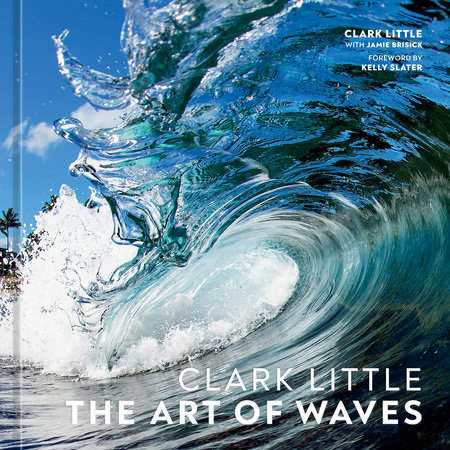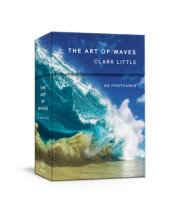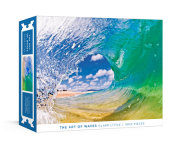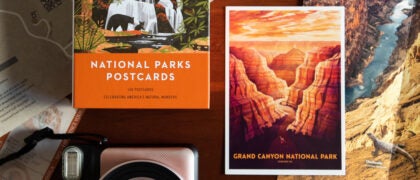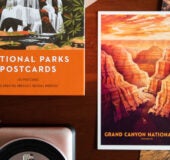Introduction: For the Love of Shorebreak
By Jamie Brisick Clark Little never set out to become the world’s best wave photographer, but in hindsight it seems as if he’s spent his entire life training to be exactly that. He’s been a devout surfer since the age of six, on the North Shore of O‘ahu, where the waves are big and powerful, and the light and water color are majestic. Clark and his older brother, Brock, were thrill-seekers. While Brock heaved himself over the ledges of thirty-foot beasts on the outside at Waimea Bay, Clark preferred the Waimea shorebreak, where swells bounced and torqued and tripled up before exploding on shallow, neckbreaking sand. His amygdala registered no fear, and his pain threshold was like an MMA fighter’s. Clark is designed to be in dangerous water.
In 2007, Clark’s wife, Sandy, bought a photo of a wave, shot from the shore, to hang on their bedroom wall.
Clark saw it and chuckled. “Honey, what are you doing buying a picture of a wave?” he said. “I’ve surfed the shorebreak all my life. I’m going to go out and get one from inside the barrel.”
With a cheap point-and-shoot camera encased in a water housing purchased on Amazon, he threw himself into the Waimea shorebreak, the same wave he grew up surfing, not far from their family home. After a series of requisite beatings, he nailed some shots.
The results were spectacular. The fast shutter speed froze what in real time happens way too quickly for the naked eye to study. The way the wave sucked up the sand. The way the heaving lip resembled blown glass, with reflections of trees and the shoreline.
Because a barreling wave is so powerful and fickle, the tube is an almost sacred space that most surfers see rarely, if ever. Clark had spent his entire surf life getting into the tube—and out of it— without breaking his neck. His lifelong relationship with it was palpable, and the shots he took that day had a sort of ultrasound-like intimacy. For years he had tried using words, with limited success, to explain what he saw and experienced. These photos were his first chance to truly share with others the incredible world he was witnessing inside the shorebreak waves.
Clark knew tubing waves, but he also knew something else subconsciously: composition. His father, Jim, taught photography and art at Punahou School and University of Hawai‘i Leeward for thirty years. While Clark spent his formative years frolicking in giant surf, he also hung out with his dad in the darkroom on the weekends, and he grew up with photos lying around the house. The Golden Ratio, the well-balanced frame, the nuances of light and color—Clark was exposed to all the principles of good photographic composition. Without thinking, he absorbed this knowledge and applied it years later to frame the shot in a split second, deep inside the tube.
Sandy loved the new wave photos on her walls, and Clark loved hurling himself into thick, tubing shorebreak with a camera. He shared his images with family and friends—they were rapt. He upgraded his camera gear and started to pass his work around. His breakthrough came when he was asked to submit twenty photos to a prominent UK news agency. On a single day in February 2009, several major UK newspapers featured both Clark’s images and stories about him. He woke the next morning to more than seven hundred gushing emails, including requests to appear on
Good Morning America,
The Today Show,
Inside Edition, and others. Within one year, Clark resigned from his supervisory position at the Wahiawā Botanical Garden and devoted himself fulltime to photography.
Since then, Clark’s rare combination of skills has sharpened and strengthened. He’s gotten even wiser to the whims of the sea and almost Bruce Lee-like in his dances with slamming waves. He has a sense of zen calm in even the heaviest situations. Instead of worrying about getting pummeled, he focuses completely on capturing the decisive moment. And he’s expanded beyond the shorebreak, training his lens on the myriad sea life that abounds beneath the surface, and the unique shapes, colors, and perspectives caught from high above it.
This book is a survey of his remarkable body of work. Some of these images have enjoyed long and storied lives; many others have never been published before. Interspersed with essays, interviews, and quotes, the following pages will give you a greater understanding of both Clark Little and that special space inside a breaking wave.
Copyright © 2022 by Clark Little with Jamie Brisick, Foreword by Kelly Slater. All rights reserved. No part of this excerpt may be reproduced or reprinted without permission in writing from the publisher.




